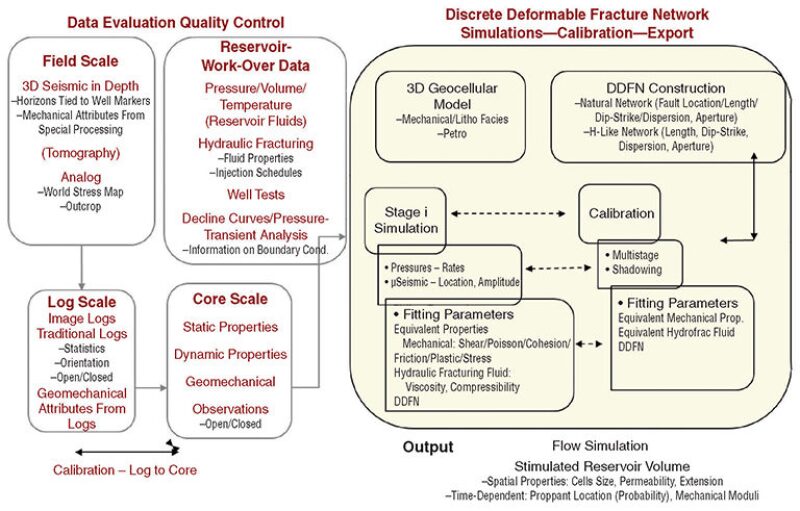To understand production from shale reservoirs, the role of hydraulically induced fractures, natural fractures, and their interaction in a formation must be captured. Implementation of such approaches is data-intensive and is accurate only when the field is fully characterized. A model has been developed in which fractures are discretized explicitly and flow is coupled by use of simplified mechanics. It can be considered as an intermediate method between a fully developed discrete-fracture-network (DFN) model and simplified hydraulic-fracturing models
Introduction
The current view is that many unconventional reservoirs comprise well-developed natural-fracture networks with multiple orientations within which complex hydraulic-fracture patterns develop, as suggested by microseismic data.


